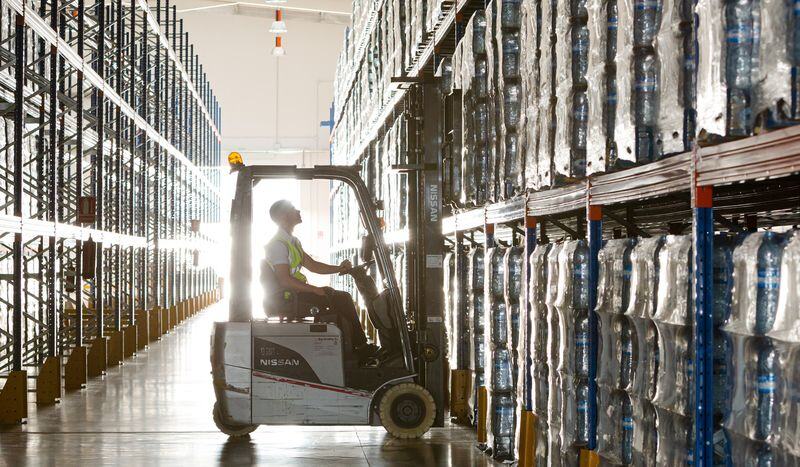How to Manage Seasonal Demand in Manufacturing and Logistics
No matter how hard you try, it seems like the busy season throws more at your business than you’re prepared to handle. Every year, it’s a scramble to grab the extra cash that’s being thrown your way if you can meet your customers’ seemingly insatiable, seasonal demand for that precious period of time. We at Veryable work to solve this problem with our on-demand labor marketplace, connecting businesses to workers quickly so you can meet demand when you see it. While we wish we could solve the whole problem, it’s a bit more complicated than that. We put together this guide with all the steps you should take that will prepare your business for the peak season.
In this article, you will learn the steps to take so you can manage seasonal demand through analysis of your past demand and careful planning for your peak season.
Five Steps to Managing Seasonal Demand in Manufacturing and Logistics
- Identify seasonal products and the length of peak seasons
- Know your lead times for seasonal products
- Estimate demand increase during your peak season
- Identify materials and labor needed to meet seasonal demand
- Prepare for deviations from your forecast demand
1. Identify seasonal products and the length of peak seasons
Begin by identifying which of your products have seasonal demand, and how long those seasons of high demand last. To do this, you can analyze the trend of sales for your products and take note of any increases that break from the normal trendlines.
For example, if all of your products sold 10% more in Q2 of last year and continued following your overall upward trend, but let’s say Product Z sold 20% more in the same quarter then dropped back to only a 10% increase in the following quarters. This points to seasonal demand for Product Z because the increase in sales volume was more than your other products only during that season.
During the peak seasons for your products with seasonal demand, you’ll want to be prepared to produce more of these products. You’ll also want to produce them faster so that you can take full advantage of the opportunity for more sales.
2. Know your lead times for seasonal products
After identifying which of your products are seasonal and how long the peak season might last, you need to know your lead times for manufacturing or shipping these products. This information will help you prepare to meet the increased demand for these products.
To take full advantage of your business’s potential in peak season, you need to reduce your lead times especially aggressively during that season.
To do this, you can optimize your processes to eliminate activities that waste time. Analyze how you’re currently inventorying and transporting materials, as well as the timing of your orders and shipments, to find ways you can reduce waste. Ineffective inventory systems cost you time when workers have to search for products, and poorly timed orders and shipments leave you waiting and fill your backlog.
You can also bring in extra workers during peak season to speed up operations. This is especially effective if you have optimized your processes, because it allows you to give more general work to the extra hands on deck and let your specialized workers focus on what they do best.
For example, let’s say you have a group of machine operators who also have to clean up a work area at the beginning and end of each shift. This is inefficient because your workers with a special skill set are using their time to do something that requires much less training. If instead you broke that cleaning task into a separate role, you could give that general work to someone else to let the machinist focus on doing their specialized work.
3. Estimate demand increase during your peak season
You should look at past years of data you’ve collected to get a realistic expectation of how much increased demand you might see during peak season.
With this data, you can see the average monthly sales and compare that to the peak seasons. By finding the difference between an average month and a peak month from previous years, you can estimate how much demand might increase during the coming peak season.
With an estimate of how many extra units you will need to produce, you can begin to plan for the materials and labor needed to capture extra revenue during your peak season.
4. Identify materials and labor needed to meet seasonal demand
Now that you have forecast your demand for the peak season, you need to identify how much materials and labor you will need.
You should have a good idea of how much material you will need for the increased sales you expect. Since you have already calculated lead time, you can plan how many weeks in advance you should order these materials. This way you have material on hand and can quickly produce what your customers order during peak season.
At this time, you should also plan for how you will find the labor you need to meet increased demand. You need to decide whether you will find staff yourself, pay overtime, use a staffing agency, or use another solution like on-demand labor. Based on which method you choose, you will need to start your search on different timelines before peak season.
Paying your current employees overtime might be the fastest way to get the job done, but it comes with the costs and increases the risk of burnout. On-demand staffing or on-demand labor is typically the next fastest way. Finding workers using a staffing agency is a little faster than finding workers on your own.
5. Prepare for deviations from your forecast demand
No matter how hard we try, nobody can see the future. That’s why you should prepare for some deviations from your forecast demand.
You should ask yourself the following questions and identify a backup plan for each scenario so that you are truly prepared for peak season, no matter how it turns out:
- What will you do if demand is lower than expected?
- What will you do if demand goes even higher than expected?
- What will you do if demand goes up and then suddenly drops off?
These scenarios will help you develop backup plans for the extra materials and labor you planned for in the previous step.
Responding with agility to seasonal demand
Preparation is crucial to meeting seasonal demand, as you can see outlined in the steps above. Whether your business faces only some seasonal demand or almost exclusively produces products with high seasonality, you know that preparation goes a long way.
However, you also know that the problem of seasonal demand is never fully predictable.
That’s why in addition to thinking ahead, you need to be able to respond quickly to changes in demand. With a solution like Veryable’s on-demand labor marketplace, you can find workers quickly during peak season and then taper off your labor supply as the demand drops back to normal levels.
Stories From The Real World
In this video, business users from several different e-commerce businesses share how the Veryable solution has helped them take full advantage of peak season while cutting costs and improving service levels in the process.
For more on-demand labor success stories, click here.
Additional Resources
Take Full Advantage of E-Commerce Peak Season With Veryable
How Temp Labor and Flex Schedules Miss the Mark for Seasonal Demand—and What Really Works
Previous Posts
Trump 2.0 Week 13 Recap: Discussing Ongoing Negotiations With Key Trade Partners, A Potential Deal With China On The Horizon, and More
The Future of Manufacturing and Logistics
Create a free business profile today to explore our platform.






